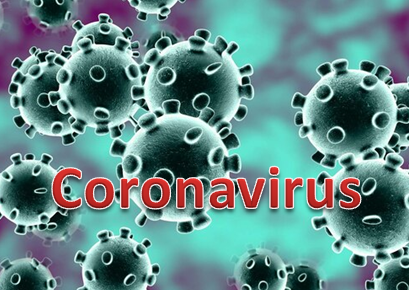In response to the COVID-19 outbreak, the FDA is postponing most foreign inspections through April outside of the US due to travel restrictions. The FDA has confidence in its ability to maintain oversight over international manufacturers and imported products using alternative tools and methods, including monitoring products at the border, review of importer compliance, and sharing of information with foreign governments. The FDA, through its risk-based import screening tool (PREDICT), will focus examinations and sample collections based on heightened concerns of specific products being entered into US commerce. @ https://www.fda.gov/news-events/press-announcements/coronavirus-disease-2019-covid-19-update-foreign-inspections?utm_campaign=031020_PR_Coronavirus%20%28COVID-19%29%20Update%3A%20Foreign%20Inspections&utm_medium=email&utm_source=Eloqua
ruth
Coronavirus Update: Foreign Inspections
ruth
The FSIS (Food Safety and Inspection Service) conducted a baseline study from 1 June 2017 through 31 May 2018 to characterize and determine the prevalence of Salmonella and assess the occurrence of Shiga toxin-producing Escherichia coli (STEC) in a variety of raw pork products. 4,014 samples from slaughter and processing plants were analyzed for Salmonella, and 1,395samples from slaughterhouses were also analyzed for STEC. FSIS determined that the national prevalence of Salmonella in raw pork products was highest in comminuted products (28.9%), followed by intact cuts (5.3%) and nonintact cuts (3.9%). Less than 1% of the samples analyzed were positive for the top seven STEC. The results indicated that steps in the processing of raw pork into comminuted products allow pathogens to survive or grow despite current pathogen reduction strategies. The data from the study suggest that the presence of aerobic count and E. coli are not correlated with the presence of pathogens. 32.8% of all Salmonella isolates in the study belong to serotypes Anatum, Infantis, and I 4,[5],12:i:−. Most of the antibiotic resistance genes carried by I 4,[5],12:i:− were antibiotics used in the treatment of human infections. The low frequency of the top seven STEC recovered, and the limited epidemiologic evidence that pork-associated infections indicate that this pathogen may not be a significant food safety concern in raw pork. Additional research is needed to understand the full range of STEC serotypes present in raw pork products.@ https://meridian.allenpress.com/jfp/article/83/3/552/426177/Salmonella-and-Shiga-ToxinProducing-Escherichia
ruth
Since 2017 E. coli O157H:7 in leafy greens caused outbreaks across the U.S. and Canada sickening more than 500 people (200 admitted to hospitals and seven death). As a result, the FDA has released its 2020 Leafy Greens Action plan to resolve repeated E. coli outbreaks from romaine lettuce. The plan calls for a more urgent and collaborative approach to solve the problem, providing technical assistance to the farmers. The leafy green industry welcomes FDA input on product testing data, research, and information gathered through outbreak investigations. The FDA’s plan has many initiatives, including Advanced agricultural water testing; Enhanced inspections, auditing and certification programs; Develop a “Leafy Green Data Trust,” a public-private bank of data from inspections, traceability, audits and other information collected by growers; Meeting with growers in Salinas, Calif., and Yuma, Ariz., about issues specific to those regions; Continued FDA surveillance inspections of romaine; Issue a proposed rule on required records for traceability; Enhance recall communications, including using retail loyalty card data; Accelerate whole-genome sequencing data submissions, and Support multi-year “longitudinal” studies in growing areas to understand better how pathogens survive. @ https://www.freshfruitportal.com/news/2020/03/06/fda-unveils-leafy-green-safety-action-plan/
The FDA has unveiled a wide-reaching action plan to improve the safety of leafy greens and prevent and better respond to E. coli outbreaks.
Doug-B
A report on antimicrobial resistance in zoonoses released today by the European Centre for Disease Prevention and Control (ECDC) and the European Food Safety Authority (EFSA) claims that Salmonella and Campylobacter are becoming increasingly resistant to ciprofloxacin. The data shows that a large proportion of Salmonella bacteria are multidrug-resistant. In humans, the resistance increased overall from 1.7% (2016) to 4.6% (2018). For Campylobacter, 16 out of 19 countries report very high or extremely high percentages of ciprofloxacin resistance. High resistance to ciprofloxacin is also described in Salmonella and E. coli bacteria from poultry. The combined resistance to fluoroquinolones and third-generation cephalosporines in Salmonella and fluoroquinolones and macrolides in Campylobacter remains low. In food-producing animals, susceptibility to all antimicrobials has increased. A decline in resistance to ampicillin and tetracyclines in Salmonella Typhimurium in many countries is an encouraging trend. @ https://www.ecdc.europa.eu/en/publications/EU-summary-report-antimicrobial-resistance-zoonoses-2017-2018
Data on antimicrobial resistance (AMR) in zoonotic and indicator bacteria from humans, animals and
food are collected annually by the EU Member States (MSs), jointly analysed by EFSA and ECDC and
reported in a yearly EU Summary Report.




